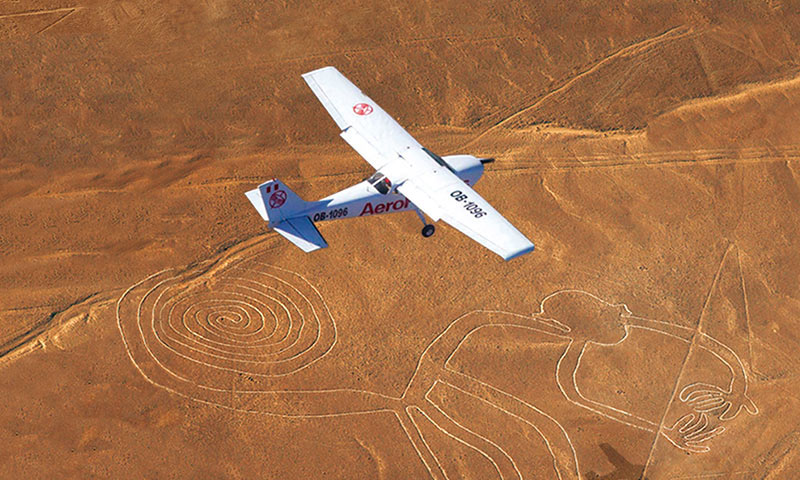DO ANIMALS POSSESS A “SIXTH SENSE”?

Pet lovers and animal communicators have known for long that the furred, feathered and scaled dwellers who share their lives with us humans on this planet are endowed with an elusive sixth sense that we do not have access to. Amazing well-documented case histories of animals who have demonstrated astounding abilities of prediction of natural disasters vouch for their claims. Yet, the matter is open to debate, as researchers are divided in their opinion. While some say that animals do possess a sixth sense, others assert that this uncanny faculty of animals could be nothing more than an extension of the same five senses and hence it could be explained without invoking a sixth sense.
About an hour before the tsunami hit Thailand in December 2004 the villagers of Bang Keoy recalled watching a startled herd of buffaloes on the beach lifting their heads, looking towards the sea and then scurrying for higher ground. The villagers who followed them were reportedly saved.
When the same giant waves ravaged the southern and eastern coasts of Sri Lanka, killing many thousands of coastal dwellers and flooding the Yala National Park, home to many elephants and several leopards, up to 3km inland, wildlife officials were quoted as saying that seemingly no dead wild beasts were found in this animal reserve as they had left the coastal area well in advance, sensing the oncoming disaster. Some visitors who were at a bungalow in the park claimed that around an hour before the tsunami struck the coast, a herd of spotted dear had climbed up the sand dune behind the bungalow and were gazing out at the sea, oblivious to the presence of humans around.
During World War II when England was being pounded almost nightly by the German Air Force, many English families learned to rely more on their cats than on radar alerts for warnings of danger.
In earthquake-prone China authorities encourage people to report unusual behaviour of animals. In many cities earthquake warnings are said to be based on such behavioural reactions of animals.
When the earthquake devastated the Yugoslavian town of Skopje in 1963 the animals of the local zoo reportedly aroused the zookeepers from their sleep. Elephants charged bars of their cages and tigers paced the cages, roaring incessantly. Police officers on patrol noticed the absence of birds in the battered town.
When Bezymianny volcano in Kamchatka Peninsula in the then Soviet Union erupted during the winter of 1955-56 not a single bear was killed even though many lived in its vicinity. Russian scientists claimed that the bears interrupted their hibernation and went to safer spots before the volcano’s activity was first recorded on instruments. A similar happening is described by Nandor Fodor (1895-1964), the American parapsychologist of Hungarian origin. Prior to the eruption of Mount Pelée in the West Indies island of Martinique, the cattle became extremely restless, dogs howled continuously and birds stopped singing and left the area.
Such happenings, inevitably, tend to give credence to the widely-held notion that animals possess a sixth sense in addition to the known five senses: sight, smell, touch, taste, and hearing. It is now recognised that there could be many more, and senses used by other non-human organisms could be even greater in variety and number.
Author Bill Schul, writing on the amazing world of animals in his enthralling book The Psychic Power of Animals, says that many kinds of animal behaviour cannot be attributed to our present knowledge of the five senses and hence they may be traceable to the definition of extrasensory perception (ESP). He writes about crabs who are capable of monitoring ocean tides a thousand miles from the sea. Schul cites the case of a cat named Henry who never failed to show up every Thursday evening at an auction house less than two blocks away, but never on other days. He would arrive fifteen minutes ahead of the crowd and perch himself atop a wooden file cabinet to watch the entire proceedings. He narrates the incident of another cat who paid his last respect at the grave of his master to whom the cat had been extremely close. Another anecdote was the case of a man who owned a large cattle ranch and who cared much for his animals. During the funeral procession of the man herds of animals gathered from the surrounding pastures in long lines, tossing their head, pawing the ground and lamenting in tones. When John Gambill, founder of a wild goose reservation in Texas, died in 1962 hundreds of geese flew into the hospital, honking their requiem. The author also writes about the bees who attended the funeral of their keeper.
Animals’ conception of death
This, then, raises a very interesting question: do animals understand the nature of death? Although some animals seem to know nothing of its approach, others get ready for the event. For example, certain dogs and cats search for places to be alone at the time of death, knowing that it is imminent. Researchers have found that chimpanzees demonstrate a haunting fear of death. Also puzzling are the cases in which an animal has come to know the death occurring to its master many miles away and animals who have willfully given up life upon the death of their masters or shortly thereafter.
Interesting cases of animal spirits (mostly of dogs, cats and horses) also abound. If animals do survive bodily death, the question arises as to what awaits them on the other side. Schul queries whether animals can experience reincarnation and thereby evolve towards higher states of awareness. He points out that animal qualities such as love, loyalty, dedication and sacrifice are not temporarily expressed and such virtues are not seen in all creatures. Meanwhile, the reaction of animals to ghosts and apparitions has been postulated to bear further evidence for an unknown sixth sense.
Navigational skills of birds and fish
Way back in the 1960s, Dr. Lester Tarkington, a scholar, had theorised that birds navigate by means of geomagnetic fields. Schul concurs with him, but argues that this theory does not explain how monarch butterflies can locate targets fifteen hundred miles away, how the green turtles navigate nearly fifteen hundred miles of open ocean, swimming from Brazil to tiny Ascension Island, or how a cat can know the exact time of the day. Scientists are still breathless over the discovery of dolphins having larger cerebral cortexes than humans. This grey folded mantle enveloping the rest of our brain to provide us with superior reasoning power is more complex in the dolphins than in ourselves. According to one study, dolphins’ brains work sixteen times faster than a man’s.
Animal naturalist William Lon spent his life researching the communication patterns of animals separated by many miles and concluded that the distance was no obstacle to their communication.
The ability of our pets to determine the arrival of a family member also clearly reaches beyond familiar sounds of parking cars or footsteps. Many family pets are able to determine such things well in advance. Animals also seem to know when they are going to the vet.
Animals with special attributes
The Romans viewed owls as an ill omen of impending disaster. In practically every culture, the belief is rife that howling of a dog at night would forebode death of someone.
In many ancient cultures elephants were seen as sacred animals endowed with special powers and attributes. But snakes, regarded as the cleanest of all animals on earth, were revered much more. The Hopi Indians of New Mexico and Arizona, though not worshipping them, rather believe that the snakes are highly psychic and communicate with the higher spirits. A god named Kukulkan was worshipped by the early Mayan Indians of Yucatan, Mexico. The Indians of Asia too accept the supernatural wisdom of these creatures while in Egypt and Greece snakes were held in high esteem. Roman gods of medicine were depicted holding a staff with a snake coiled around it. An exception was the Judeo-Christian tradition, as according to Genesis, Adam, the first man, was deceived by the serpent and hence it was despised for this Fall of man. Yet, the verses in Job 12: 7-10 clearly acknowledge the wisdom of all animals inhabiting land, air and sea. Jesus Christ is depicted as the Good Shepherd who lays down his life for his sheep. St. Francis of Assisi (1182-1226), founder of the Franciscan Order, always viewed the animals surrounding him as his little brothers and sisters. Buddha preached that all living creatures should be treated with kindness and compassion. One of the great defenders of animals in our times was Albert Schweitzer (1875-1965), the Alsatian-German theologian, philosopher and mission doctor in Equatorial Africa, who received the 1952 Nobel Peace Prize for his philosophy of “Reverence for Life”.
Many scientists, in agreement with mystics, are now speculating that the brain and mind are not the same and part of the mind is in touch with everything in the universe, ignoring form, space and time. South African biologist Lyall Watson (1939-2008), trying to explain natural and supernatural phenomena in biological terms, tells in his groundbreaking book Supernature that there is one life which embraces every animal and plant on the planet and we are all part of the whole. Mad Bear, an Indian medicine man of the Iroquois in North America, says that there are other ranges of consciousness-invisible, inaudible and intangible-that most people have no contact with. The Cherokees, the Sioux and the Crow tell of the strange psychic exchanges between them and nature.
Some researchers claim that animals, less belaboured by the complexities of life arising from the five senses, are more in tune with nature and psychic dimensions than humans. John Burroughs (1837-1921), an American naturalist, called it the “hidden heart of nature”.
Arguments against the sixth sense
However, all scholars do not subscribe to the “sixth sense theory”. British biologist Ivan Sanderson (1911-1973) contends that it could be “supersensory” perception rather than “extrasensory” perception that enables animals to predict earthquakes.
Matthew van Lierop, a specialist on animal behaviour at Johannesburg Zoo in South Africa, says that though there has been a lot of anecdotal evidence of animals’ predictions of disaster, it has not been proven and no specific studies have been conducted due to difficulties in lab or field testing.
John Caprio, a neurobiologist at Louisiana State University in Baton Rouge, who is studying taste and smell in fish, says that scientific evidence for a sixth sense in animals is slim. According to him, animals must be responding to real sensations, without using a hitherto unknown faculty. Caprio says that strange behaviour of animals cannot be viewed as something paranormal. He argues that over generations, animals have developed their senses in ways that allow them to detect sounds, smells, vibrations, or other sensations that people cannot detect.
Our ears are tuned to a certain range of sounds—those with frequencies between 20 and 20,000 hertz. One hertz is equal to 1 cycle (or vibration) per second. As frequency goes up, pitch does, too.
Dogs can hear sounds up to 45,000 hertz. Bats can hear up to 120,000 hertz. Dolphins and some of the fish can hear frequencies greater than 200,000 hertz.
According to Caprio, elephants and whales, on the other hand, communicate using frequencies that are lower than those we detect. Flies can even hear each other when they land on a blade of grass. “If your dog suddenly starts whining, it means that he has heard something your ears cannot detect”, he explains.
A whole spectrum of light and sound lies beyond what we normally see or hear. The human eye can detect light of only certain wavelengths (from violet to red), but some animals can detect ultraviolet light or infrared light. ***






